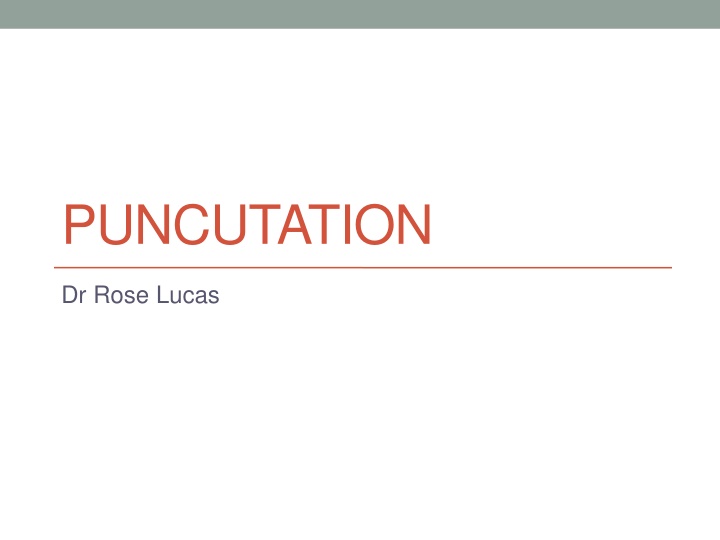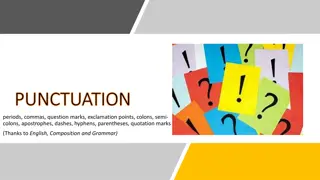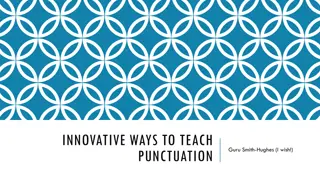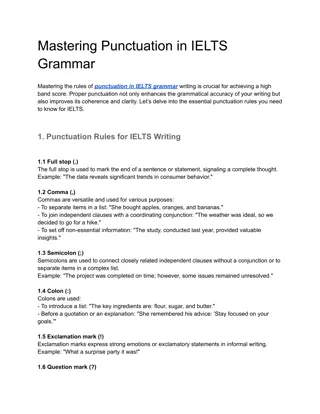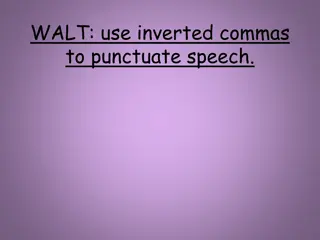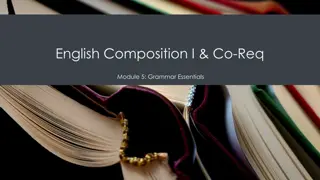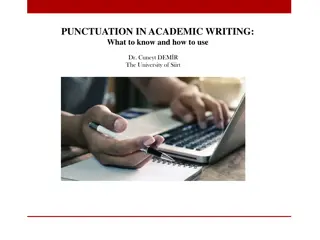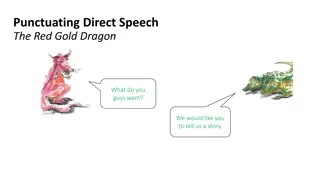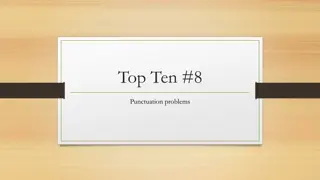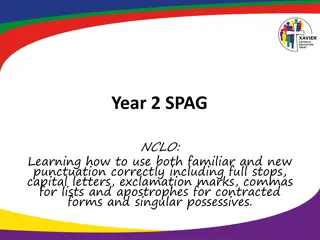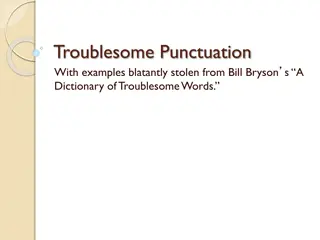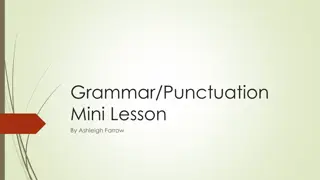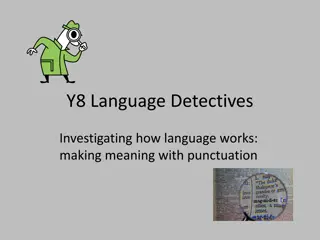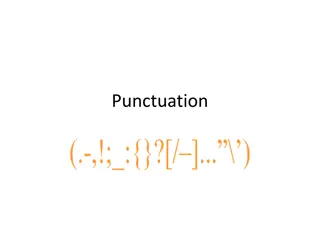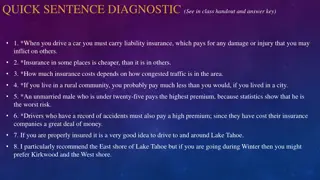Mastering Punctuation for Effective Writing
Punctuation plays a crucial role in crafting grammatically correct English sentences. It enhances communication, professionalism, and readability. Learn about the comma, semi-colon, colon, dash, and indicating plurals to elevate your writing style.
Uploaded on Apr 15, 2025 | 0 Views
Download Presentation

Please find below an Image/Link to download the presentation.
The content on the website is provided AS IS for your information and personal use only. It may not be sold, licensed, or shared on other websites without obtaining consent from the author.If you encounter any issues during the download, it is possible that the publisher has removed the file from their server.
You are allowed to download the files provided on this website for personal or commercial use, subject to the condition that they are used lawfully. All files are the property of their respective owners.
The content on the website is provided AS IS for your information and personal use only. It may not be sold, licensed, or shared on other websites without obtaining consent from the author.
E N D
Presentation Transcript
PUNCUTATION Dr Rose Lucas
Puncutation Punctuation is about 2 key things: Writing correct grammatical sentences in English. This is important not just to slavishly follow rules, but a) to optimise communication and b) to present prose which is professional in style and appearance. It enhances, not inhibits your writing style. Punctuation can be seen as the stage directions for your prose. It gives a reader a sense of how you want your words to be read and what they mean. It is the breath and heart beat of your written expression.
The comma The comma does several important jobs in writing a sentence: It differentiates between various clauses (with a verb) or phrases (without a verb) within the sentence. The comma corresponds to taking a breath ie a short space between closely linked ideas. Corresponds to the idea of the musical rest Too many commas creates a fractured and hard to follow sentence structure; not enough makes long swathes of words that the reader finds it hard to make their way through.
The semi-colon ; The semi-colon indicates a more substantial break or pause on the construction of the sentence ie more than a comma, but less than a full-stop (period).It is usually applied where there are complex and interrelated ideas. Within the construction of the sentence, both sides of the semi-colon must be potentially able to stand as independent grammatical sentences ie they must have a subject, a main verb and an object. If, when you sound out the components of the sentence divided by the semi- colon and they sound unfinished don t use it. Don t overdo the semi-colon. Save it for particularly complex interrelated points. Think about whether two independent sentences would be preferable.
The colon : The colon is only ever used in specific circumstances: To introduce a list. Eg. The components of a sentence are: verb, subject and object. To precede a quote (where this is integrated into the grammar of your sentence). Eg. This is evident in Wordsworth s choice of imagery: a host of golden daffodils. When you are indenting a quote. Eg. Smith discusses this idea: Wordsworth nature imagery suggests
The dash I myself am very fond of the dash but it does tend to be a less formal device than is normally used in academic essays. It is more informal, almost conversational in its tone. It is similar to the semi-colon, in that the two halves of the sentence are quite closely related, but some differentiation or emphasis is required. However, what follows the dash does not necessarily need to stand as an independent grammatical sentence
Indicating Plurals To indicate a plural (more than one), an s or an es is added to a noun: Eg. 2 dogs, 3 fishes No apostrophes are ever used to indicate a plural
Possessive Apostrophes When one noun owns or is in a relationship of possessing something/one else, that relationship is indicated by the use of an apostrophe When the noun doing the owning is single, the apostrophe goes before the s : Eg.: the dog s bowl, the student s mark Its doesn t matter if more than one thing is owned, the case always refers to the noun doing the owning: Eg: 1 dog s bowls, the student s overall marks If the owning noun is plural, the apostrophe comes after the s : Eg: 2 dogs bowls, every students marks
Apostrophes of Ommission/Contraction Sometimes an apostrophe is used to indicate that a letter or letters have been left out of a word, and the word or words - thus becomes shorter (contracted). Eg: It s hot today = It is hot today We re having fun = we are having fun You shouldn t = you should not
The tricky exception! Its/Its It s = a contracted version of It is. This is not a possessive. Its = the third person neutral possessive: Eg The dog ate its dinner
Process for Writing the Long Essay 1. Choosing topic, engaging with it, making sure you work out exactly what it s asking. Thinking about ways of responding. 2. Deciding on the 3-4 poems you will use to answer the question. Doing close readings on each of them; deciding on which aspects of them will help you answer the topic. 3. Undertake secondary reading. 2-3 references from the library or scholarly on-line sources. What aspects do you think might be useful for responding to the topic? Make notes, put publishing details immediately into your Bibliography. (Choose referencing style and stick to it.)
Process for Writing the Essay 4. Write an (always provisional) Essay Plan in a first attempt to sort out Response to Topic/Using Poetry/Using Secondary Sources. 5. Don t forget that every essay needs: Introduction, Main Points, Conclusion, Bibliography. 6. Launch into first draft. 7. Give it a few days off so you can return to the draft with fresh perspective. Read as a critical editor. 8. Revision for Ideas (this might be a whole new draft or just refinements listen to your work carefully). 9. Proofreading for Clarity. 10. Complete your Bibliography and attend to Professional Presentation.
